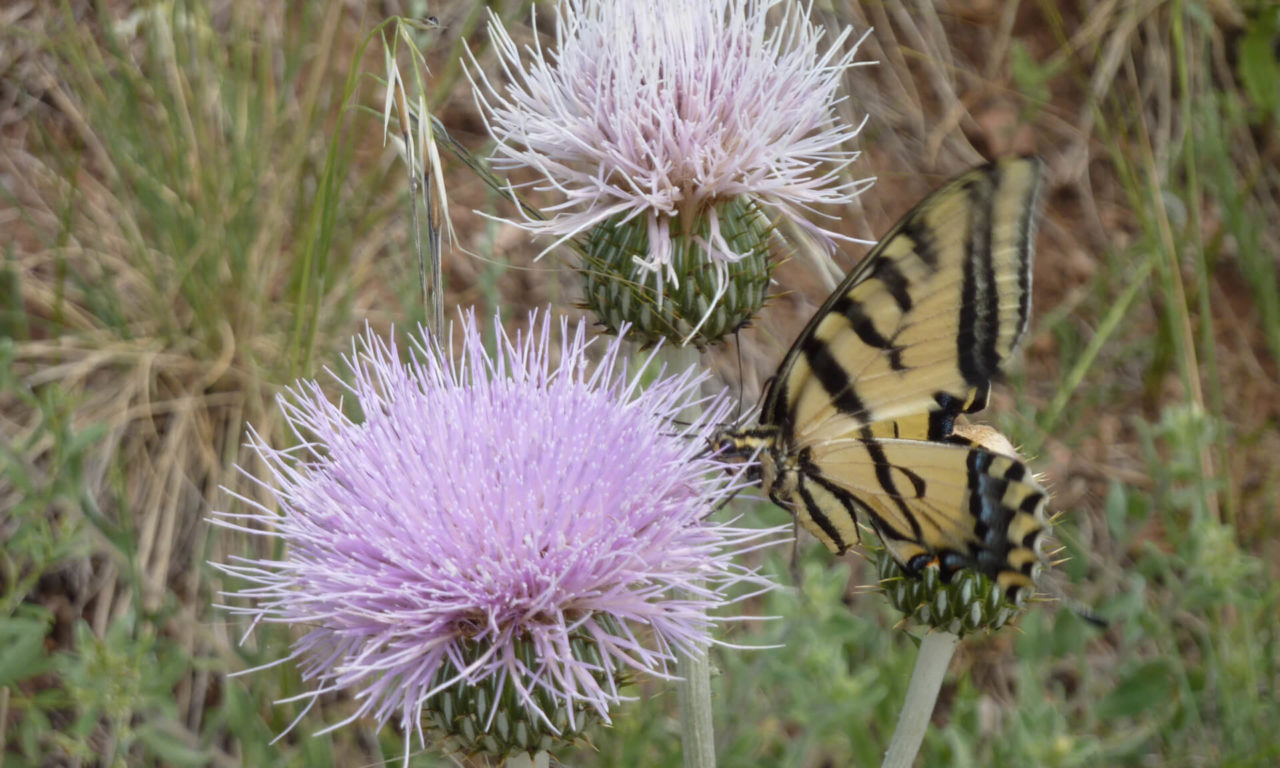Imagine being in your backyard on a warm, sunny afternoon surrounded by colorful, fluttering butterflies and sweet-smelling flowers. Now imagine creating this ecosystem yourself!
If you haven’t seen them yet, butterflies start to come out when temperatures rise above 60 degrees because they are cold-blooded. They are also diurnal, so they are active during the day. Butterflies come in beautiful variances of color and sometimes have neutral tones, too. Their scaly wings give butterflies their color. Their bright colors help them camouflage, identify mates, and show they are poisonous. Bright orange, yellow, or black colors on a butterfly might even mimic something that is poisonous to help keep them safe from predators. Aside from their magical beauty, butterflies propagate the food chain and are great pollinators.
If you want to create a butterfly habitat, there are a couple of things to keep in mind. It isn’t difficult, but gardening to attract and keep butterflies, differs from regular gardening. Butterflies won’t judge your garden on its style or color schemes, so you are free to do as you please.
Once you locate a sunny spot to start your garden, you’ll want plants that last throughout summer. This will provide butterflies with a long-lasting habitat. The ideal habitat will have suitable food for both the caterpillar and butterfly. By providing food for the life-cycle of a butterfly (nectar source, host plant, and shelter), you’re creating a place for the adult butterflies to lay eggs and for caterpillars to grow.
The best thing to do is to plant native plants, free from insecticides. If you see butterflies drinking from or laying eggs on plants you have put out, that means the plant was previously missing from the ecosystem. This is a good thing. Your garden will help the butterfly population by providing tasty nectar and you’ll be rewarded with lovely visuals and an aromatic atmosphere.
The ideal habitat will have suitable food for both the caterpillar and butterfly.
So, which flowers do butterflies like the most? Butterflies love nectar and there are certain flowers that have higher nectar content than others. Composite flowers are perfect for any butterfly garden. They are a larger flower made up of smaller florets (clusters) which provide the butterflies with more options. They like to focus on the same species of a flowering plant until they reach an empty flower. This saves them the energy of having to move from single flower to single flower. You can also plant the same species of flower in clumps to make it easier for butterflies to find food. Plants in the latana, pentas, dianthus, and phlox families are great composite flowers for a butterfly paradise.
Pickier Caterpillars
Food for the caterpillar may be trickier because they are pickier than adult butterflies. Most species of caterpillars look for a specific host plant, a or plant they will choose to eat. Only a few species share the same host plant. If there is already a host plant in the wild near you, then you won’t need to grow it yourself. Be sure to check out what’s growing around you locally.
A good place to start is by planting milkweed and dill, or parsley. Milkweed and parsley are important caterpillar food sources. The milkweed will attract monarch butterflies and anything in the parsley family will attract black swallowtails. Cabbage and broccoli (mustard family) are host plants for the cabbage white butterfly, and willow will attract mourning cloaks. These are some of the most common butterflies you may have seen near you.
Butterfly gardens create a perfect environment for butterflies and a peaceful place for you to enjoy nature right in your backyard. It’s a hobby that requires little effort to maintain (just some trimming and watering) and enriches an entire lifetime for a butterfly. Having a piece of nature that encourages butterflies will help you continue a cycle that gives back to the earth. While you enjoy the butterflies in your yard, you may also attract a host of other pollinators such as bumble bees and birds!
Ways to Attract Butterflies
- Choose plants and flowers that have a long blooming season.
- Pick flowers with high nectar content.
- Create a habitat for both the caterpillar and the butterfly.
- Plant native plants.
Here are some lower maintenance plants and shrubs that bring butterflies and other pollinators to your yard!
| Plants | Notes |
|---|---|
| Milkweed (Asclepias syriaca) | Host for monarch caterpillar; perennial, spring to fall |
| Butterfly bush (Buddleia davidii) | Can withstand colder temperatures; perennial, remains evergreen in winter months |
| Asters (Aster spp.) | Drought tolerant; perennial, blooms at the end of summer into fall |
| Bee balm (Monarda fistulosa) | Prefers moist soil; perennial, spring to fall |
| Cosmos (Cosmos spp.) | Colorful daisy-like flowers; annual, spring to fall |
| Zinnia (Zinnia spp.) | Annual; blooms in summer and fall |
| Marigold (Tagetes spp.) | Annual; spring to fall |
| Dotted blazing star (Liatrtis puntata) | Drought tolerant; perennial, summer to fall |
| Rabbitbrush (Chrysothamnus nauseosus) | Drought tolerant; perennial shrub that provides nectar for many butterfly species summer to fall |


